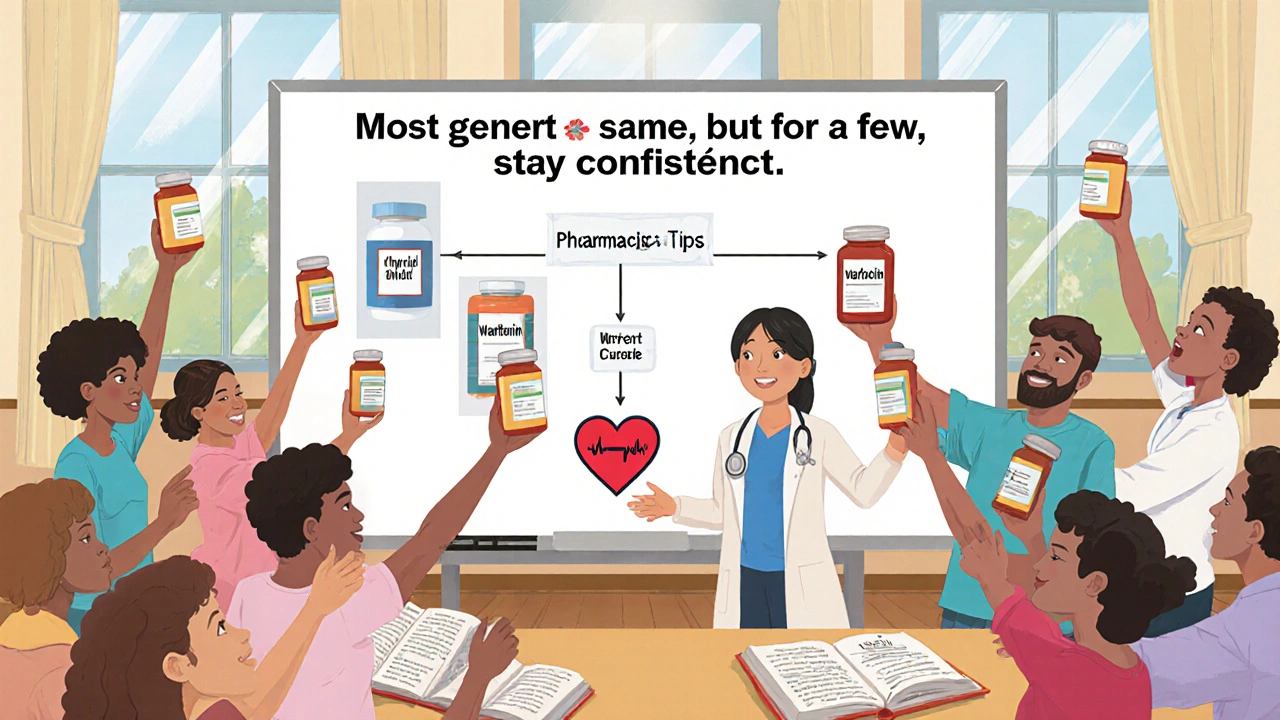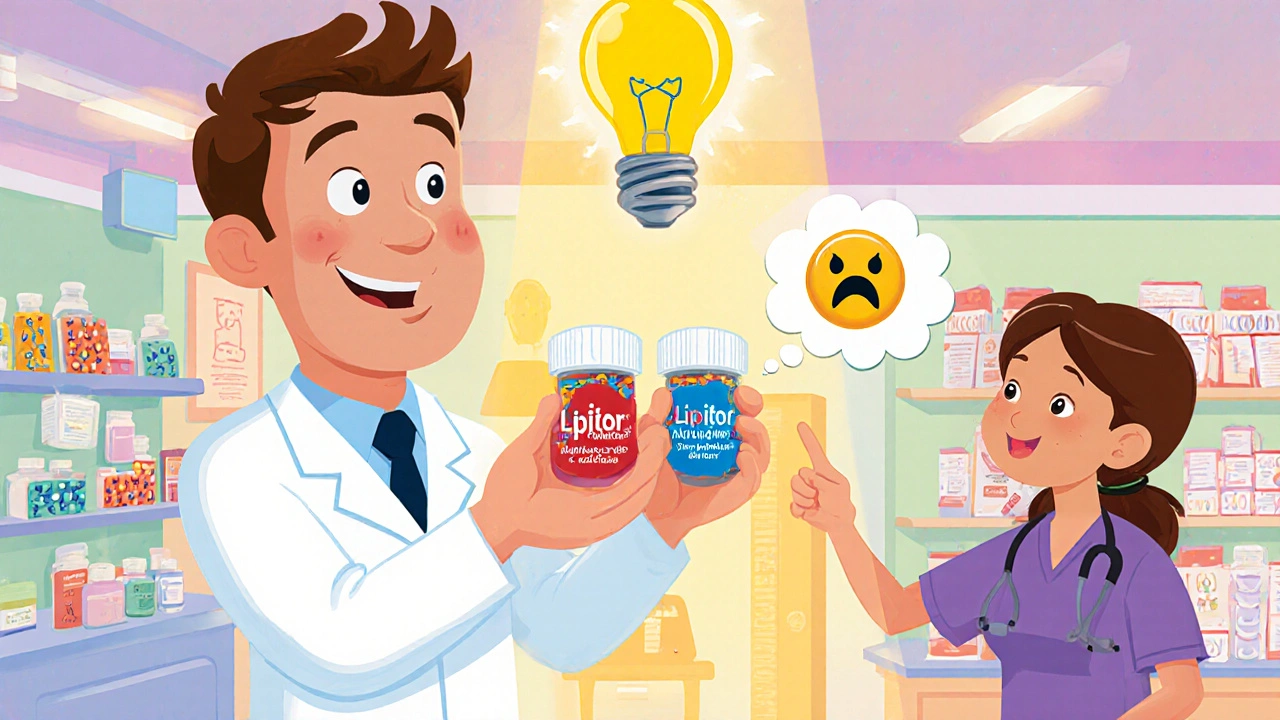More than 9 out of 10 prescriptions filled in the U.S. are for generic drugs. Yet, nearly 4 in 10 Americans still think these medications aren’t as good as the brand-name versions. Why? Because the information they’re given is too confusing, too technical, or just plain misleading.
What Exactly Is a Generic Drug?
A generic drug isn’t a copy. It’s the same medicine. The FDA requires it to have the same active ingredient, strength, dosage form, and route of administration as the brand-name drug. That means if you take 500mg of amoxicillin, whether it’s called Amoxil or just amoxicillin, your body gets the exact same drug working the exact same way.
The big difference? Price. Generic drugs cost, on average, 80% less. In 2022 alone, they saved the U.S. healthcare system $375 billion. But if patients don’t trust them, they won’t take them - or they’ll switch back to the more expensive brand, even when it’s not necessary.
Why Do People Think Generics Are Weaker?
It’s mostly about looks. Brand-name pills come in specific colors, shapes, and logos. When you get a generic, it might look totally different - maybe a different color, a different imprint, even a different size. That triggers a psychological response: “This doesn’t look right.”
Then there’s the myth that generics are made in cheaper factories. The truth? Most generics are made in the same plants as brand-name drugs. The FDA inspects them all the same way. And they must meet the same strict standards for purity, stability, and performance.
The real issue? Bioequivalence. This sounds like jargon, but it’s simple: a generic must deliver the same amount of medicine into your bloodstream as the brand, within a small range - 80% to 125%. That’s not a loophole. That’s science. It’s the same standard used for every single approved generic. And 98.7% of the 11,000 generics approved between 2010 and 2020 met this requirement.
How Do Consumer Language Guides Help?
These are simple, clear tools - often one-page handouts or short videos - that explain generics in plain language. No Latin terms. No fine print. Just facts you can understand in under a minute.
Take the FDA’s “What’s In a Name?” chart. It shows three columns: chemical name (like N-(4-hydroxyphenyl) acetamide), generic name (acetaminophen), and brand name (Tylenol). Suddenly, it’s clear: Tylenol and acetaminophen are the same thing. Just like Kleenex and tissues.
Pharmacies now use visual side-by-side comparisons: one pill labeled “Lipitor,” another labeled “atorvastatin.” Same shape, same color, same dosage - just different branding. These visuals cut confusion by half, according to studies.
Best practices? Keep it short. Use active voice: “Take this pill once a day,” not “This pill should be taken once daily.” Limit text to 500 words. Add a simple question at the end: “Can you tell me in your own words why this generic is safe?” That’s called “teach-back,” and it’s proven to boost understanding.

What About the Exceptions?
Not all drugs are created equal - and that’s okay. Some medicines have what’s called a narrow therapeutic index. That means the difference between a dose that works and one that doesn’t is tiny. For drugs like warfarin (blood thinner), levothyroxine (thyroid hormone), or phenytoin (seizure control), even small changes in how the body absorbs the drug can matter.
In these cases, some doctors prefer you stick with one brand or generic version. That’s not because generics are bad. It’s because consistency matters. If you switch between different generic versions of levothyroxine, your thyroid levels might shift slightly - enough to cause fatigue, weight gain, or heart palpitations.
That’s why the best language guides don’t say, “All generics are exactly the same.” They say: “Most generics work just like the brand. But for a few medicines like thyroid pills or seizure drugs, your doctor might recommend staying with the same version you started on.”
There’s also the case of authorized generics. These are brand-name drugs sold under a generic label - same factory, same formula, just cheaper. They have the lowest switch-back rates. If your pharmacy offers one, ask: “Is this an authorized generic?”
What’s Changing Right Now?
In 2023, the FDA launched a $4.7 million initiative to create medication-specific guides for high-risk drugs like levothyroxine, digoxin, and lithium. These aren’t generic one-size-fits-all sheets. They’re tailored. For example, a guide for levothyroxine might say: “If you’ve been stable on your current version, don’t switch unless your doctor says so.”
Medicare Part D plans must now provide standardized education materials by January 2025 - and they have to meet NIH health literacy standards. That means no small fonts, no complex sentences, no assumptions about prior knowledge.
Pharmacies are training staff to spend just 90 seconds explaining generics using three key points:
- Same active ingredient - the medicine that works in your body.
- Same effect - proven to work just like the brand.
- Same savings - you’ll pay $387 less per prescription on average.
And it’s working. Patients who get this simple explanation are 22% more likely to stick with their generic. And 34% less likely to go back to the brand.

Where to Find Reliable Info
You don’t need to search through medical journals. Here are trusted, free resources:
- FDA’s Generic Drugs Website - Updated quarterly, includes visual charts, FAQs, and videos.
- Academy of Managed Care Pharmacy’s Consumer Toolkit - Designed for patients, not pharmacists.
- People’s Pharmacy Podcast - Has 17 episodes answering real patient questions about generics.
- FDA’s YouTube Channel - Short, clear videos with real people sharing their experiences.
Don’t trust drug ads. Don’t rely on Google searches. Go to the source - the FDA, your pharmacist, or your doctor’s office. They’re the ones trained to give you accurate, plain-language info.
What You Can Do Today
If you’re on a generic medication:
- Ask your pharmacist: “Is this the same as the brand?”
- Ask: “Is this an authorized generic?”
- Check the pill’s imprint code online - it tells you exactly what’s inside.
- If you feel different after switching, don’t assume it’s the drug. Tell your doctor. It could be a different filler, or your body just needs time to adjust.
If you’re a caregiver or helping someone else:
- Use the “teach-back” method. Ask them to explain it back to you in their own words.
- Keep a list of all their meds - brand and generic - and share it with every provider.
- Don’t let them stop a medication just because it looks different.
Generic drugs aren’t second-rate. They’re the backbone of affordable healthcare. But only if people understand them.
Are generic drugs really as effective as brand-name drugs?
Yes. The FDA requires generics to have the same active ingredient, strength, dosage form, and bioequivalence as the brand-name version. That means they work the same way in your body. Studies show they’re just as safe and effective. Over 98% of approved generics meet these strict standards.
Why do generic pills look different?
By law, generic drugs can’t look exactly like brand-name pills - that’s to avoid trademark infringement. So they might be a different color, shape, or size. But the medicine inside is identical. The inactive ingredients (like fillers or dyes) might differ, but they’re chosen so they don’t affect how the drug works.
Can I switch between different generic versions of the same drug?
For most drugs, yes. But for a few - like levothyroxine, warfarin, or phenytoin - even small differences in how your body absorbs the drug can matter. If you’re on one of these, your doctor may recommend sticking with the same version. If you notice changes in how you feel after switching, tell your provider.
What’s an authorized generic?
An authorized generic is the exact same drug as the brand-name version, just sold without the brand name. It’s made by the same company, in the same factory, with the same ingredients. It’s often cheaper than the brand and sometimes even cheaper than regular generics. Ask your pharmacist if your generic is an authorized one.
Why do some people say generics don’t work for them?
Sometimes, it’s not the drug - it’s the switch. Changing from a brand to a generic, or between two generics, can cause temporary side effects as your body adjusts. Other times, people notice changes in pill appearance and assume it’s less effective. Rarely, a specific generic version may have had a formulation issue - like the one pulled for Wellbutrin XL in 2012. But these cases are extremely uncommon. Always talk to your doctor or pharmacist if you’re concerned.
Where can I find trustworthy information about my generic medication?
Start with the FDA’s website: www.fda.gov/drugs/generic-drugs. It has plain-language guides, visual charts, and videos. Your pharmacist is also your best resource - they’re trained to explain generics clearly. Avoid drug ads, social media rumors, or unverified blogs. Stick to official sources.

